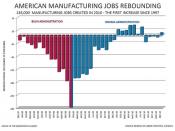IntroductionIn general, corporations exist to provide goods and services for the benefit of mankind. The opportunity to make a profit is the incentive for doing so. (3) Improving quality is considered by many to be the best way to enhance customer satisfaction, to reduce manufacturing costs and to increase productivity. Any serious attempt to improve quality must take into account the costs associated with the achieving quality, since nowadays it does not suffice to meet customer requirements, it must be done at the lowest possible cost as well (2), thereby enhancing the opportunity for increasing market share (3). Bell et all (1994) estimate that quality cost in the manufacturing industry is between 5 % and 25% of sales. Up to 95% of this cost may be expended on failure and appraisal. (3) It means that quality cost contributes significantly to the price of the products. Therefore reducing the quality cost will bring good impact to competitiveness of the products or profit maximization for the shareholders.
Quality costs are the cost of appraising a product for conformance to design requirements and to market specifications, the cost due to failure to meet requirements, the cost of preventing failures (3). Companies rarely have a realistic idea of how much profit they are losing through poor quality. Smaller firms most often do not even any quality budget and do not attempt to monitor quality costs. A small number of most managers in large companies do not really measure the results of prevention activities i.e quality improvement programs. (1) Many companies have no interest to invest their budgets on preventing activities. They more prefer to invest their money in appraisal and failure cost. This because the result is hard to measure and value, and the impact of the investment will not be recognized in...


